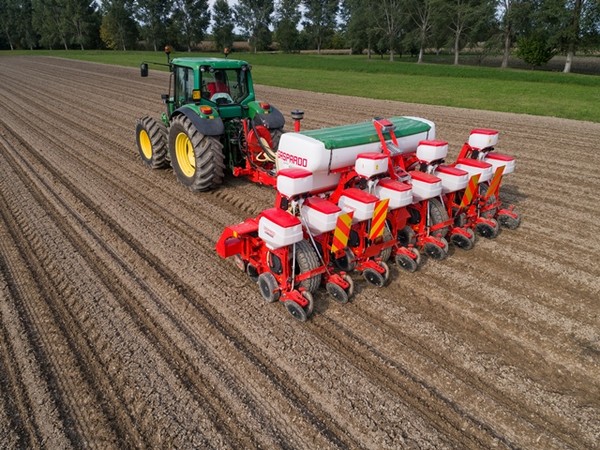
Agriculture 4.0: big data and artificial intelligence
The results of a study conducted by Image Line with the Milan Polytechnic and the University of Brescia are presented in Bologna. Digital systems can provide more income for farms, as well as efficiency and traceability
What is big data and how is it used in agriculture. This is the theme of the conference entitled “Data & Agriculture – more income, more efficiency, more traceability”, promoted by Image Line at Eima International 2018, the World exhibition of technologies for agriculture. The data collected thanks to the new digital technologies, underlined the president of Federunacoma, Alessandro Malavolti opening the discussion on 8th of november, make available a great quantity of information, fundamental to optimizing the operations in the fields, managing expenses in a targeted manner, and cutting production waste. “Big data - explained Cristiano Spadoni, head of Marketing at Image Line - is not only tables of numbers, it is also photos, images, videos, emails, exchanges of messages on social media, or sharing of information between machines, for example between tractors and Equipment”. In the agricultural sector, the mass of information made available by intelligent technologies represents an increasingly important work tool both in the most “mechanized” countries and in the emerging regions. It is thanks to accurate and immediately accessible data that farms are able to optimize production performance, reaching their set targets. The increasingly prominent theme for the primary sector finds great attention with the operators. “Already today 40% of farms employ productive techniques that fall under agriculture 4.0, while 70% of the sample - said Filippo Renga, director of the Smart Agrifood Observatory presenting the preliminary results of a study conducted with the Milan Polytechnic and the University of Brescia - is interested in using integrated platforms for data management and decision-making support systems on smartphones”. In addition to collecting information, the other major issue is the interpretation of big data. That is, the availability of technological supports able to translate the language of numbers into operational strategies. “There are many tools and platforms for the collection of data in agriculture, in particular - explained Ivano Valmori, CEO of Image Line - I’m thinking of the online software platform “Quaderno di Campagna” for treatment logs. Thanks to the possibility of organizing the information relating to processing times, machines employed, products used and agents involved, it provides a valuable support in the management of farms”. Today, and even more in the years to come, the real challenge is to reduce the costs of agricultural production, costs that - warns Marco Zibordi, CEO of Horticultural Knowledge - are on the rise.
The answer to this challenge comes not only from big data and artificial intelligence, but also from the remote management of machine support services. Soon - clarified Erik Hogerviorst, President of CLIMMAR, association that brings together European dealers of agricultural machinery - the dealers will be able to remotely manage a wide range of services on the mechanical vehicles. In short, according to the president of CLIMMAR, in the not too distant future any kind of problem will be managed and solved through digital processes, and direct intervention by humans will no longer be necessary.
Drones, a fleet for agriculture
By 2023, agriculture could become the second largest user of drones in the world. The forecast comes from the conference “New technologies and greater efficiency. Agriculture today uses drones”, promoted by Dronitaly and held as part of EIMA. As Dronitaly explains in a note, already today “the use of drones in agriculture has drawn attention to the need to reinvent traditional professional figures in the sector to bring agriculture towards the 4.0. era”. In the context of climate change, drones can prove to be valuable allies of farming communities, as well as all the tools and technologies that allow accurate, rapid and timely information to be gathered. Today, for example, drones are particularly useful in the cultivation of melons to map the weeds and evaluate the degree of ripeness of the fruit.








